
|
|
|
|
|
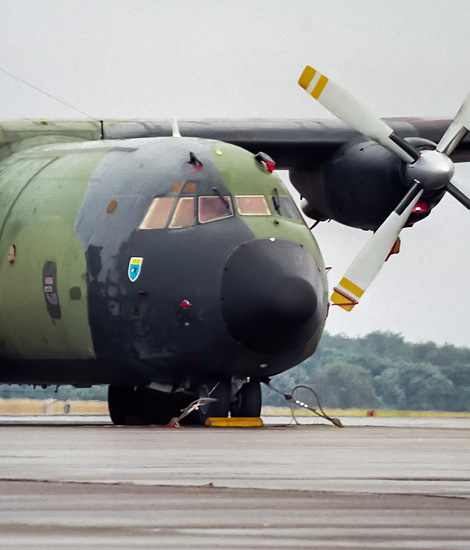
|
The French-German C-160 Transall; Wunstorf, June 24, 2000
The C-160 Transall, part 1; Text and Photograph's by Alex van Noye
The C-160D Transall is the most important strategic transport aircraft of the German Luftwaffe. The C-160 Transall is a military transport aircraft that was produced as a joint venture between factories from France and Germany. The name C-160 "Transall" is an abbreviation of the consortium "Transporter Allianz".
At the time this consortium consisted of companies, such as; MBB, Aerospatiale and VFW-Fokker. The aircraft was originally developed to meet the requirements for a modern transport aircraft for the French and German air forces. Export sales would also be made to South Africa and to Turkey and later to a small number of civil users. The C-160 has been in service for almost 40 years since the first flight of the type in 1963. The Transall has provided logistical support for overseas operations and has served in specialized functions such as the tanker role for refueling aircraft in flight, electronic intelligence gathering and as a flying communication platform. At the end of the fifties, the demand was made to replace the Nord Noratlas transport aircraft with piston engine at the air forces of France (Armée de l'Air) and Germany (Luftwaffe). The consortium was set up to encourage industrial cooperation between the two countries. This was done earlier when the Noratlas for the German service was built under license by Weser Flugzeugbau. Both France and Germany signed an agreement to develop a successor to Noratlas on November 28, 1957. The Italian government also became involved early in the project to meet their own requirements, but Italy's participation in the volatile program was soon terminated in favor of the smaller and locally built Fiat G222. The consortium, "Transporter-Allianz" or Transall, was established in January 1959 between the French company Nord Aviation and the German companies Weser Flugzeugbau and Hamburger Flugzeugbau (HFB) to design and build the aircraft.
The new transport aircraft had to be able to transport a cargo of at least 16,000 kilograms over a range of 1,720 kilometers or a cargo of 8,000 kg over a range of 4,540 km. The aircraft also had to be able to fly from semi-prepared runways. One prototype was built by each of the production partners, the first aircraft was built by Nord. This aircraft made its first flight on May 25, 1963. The prototypes of the German
|
|
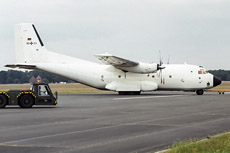
|
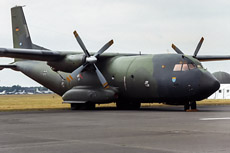
|
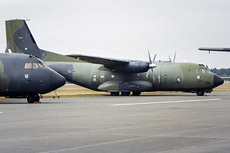
|
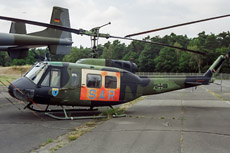
|
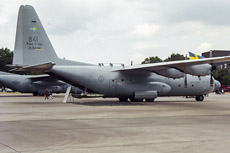
|
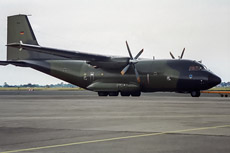
|
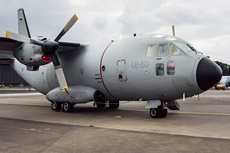
|
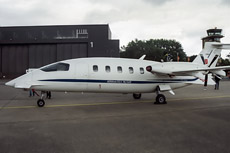
|
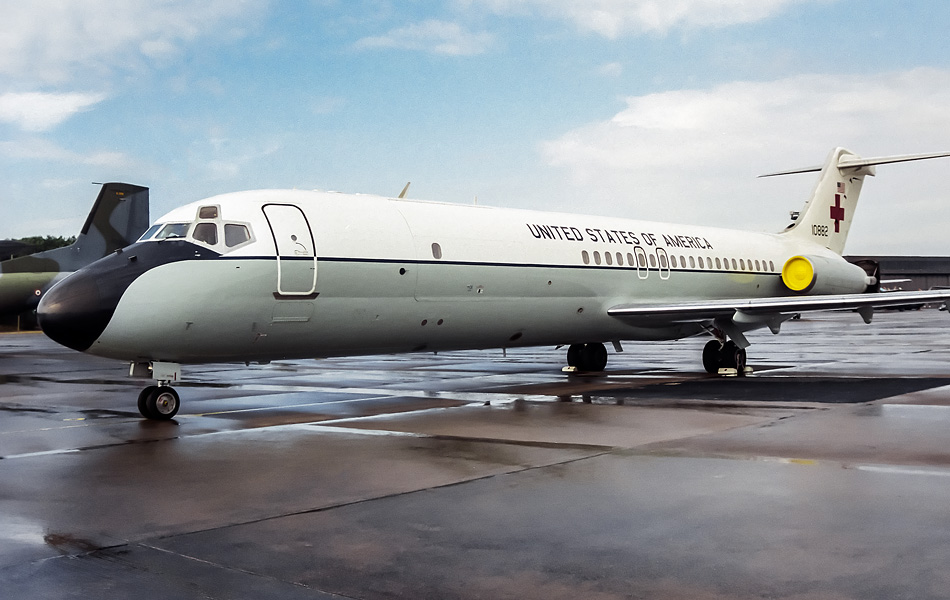
|
companies VFW and HFB flew for the first time on May 25, 1963 and February 19, 1964. These first prototypes were followed by six pre-production aircraft. These aircraft were 51 cm longer than the prototypes and were built in 1965 and 1966. The C-160 Transall is a two-engine tactical transport aircraft with a large loading area. The aircraft has a ramp at the back of the plane under the raised tail. The Transall has a high mounted wing and turboprop engines. The C-160 is designed to perform both freight and troop transport tasks. The aircraft was built to drop cargo as air delivery and the aircraft has supplies and equipment designed to be compatible with international freight logistics to facilitate loading and unloading. The floor of the Transall is, like that of the C-130 Hercules, equipped with a roller conveyor for quick and effective loading and unloading.
An important aspect of the C-160 Transall is that it makes the type suitable for tactical operations, the exceptionally good performance on shortened and unsealed runways. The aircraft is ideal for taking off on short runways with a steep slope of up to 20 degrees. The Transall has proven that it can operate on landing strips up to 400 meters long. In the role of the air bridge, a later production of the C-160 could carry up to 8.5 tons over a distance of 5,000 kilometers and the aircraft was able to take off well from a runway of only 700 meters. Depending on the configuration of the aircraft, a single Transall can unload as many as 88 paratroopers or it can carry 93 well-equipped troops. The C-160 Transall is powered by two Rolls-Royce Tyne turboprop engines which drive two four-bladed Dowty Rotol propellers. Through the design of the propellers with those long thin blades, the C-160 makes that classic recognizable hum. Advantages of the twin-engine configuration over a possible four-engine configuration are lower unit and production costs, lower weight and lower fuel consumption, simplified design and good reliability of the aircraft. Each engine is equipped with an auxiliary generator system that provides the aircraft with both electricity and hydraulic pressure. An auxiliary power unit is used to power the aircraft on the ground and for possible emergency situations in the air. The C-160 Transall is by this design a cheaper alternative for the American C-130 Hercules.
Production orders in Germany for delivery to the Luftwaffe were delayed by attempts by Lockheed to sell its C-130 Hercules transport aircraft to Germany. Eventually these attempts were rejected and the contract was signed for 160 C-160D Transalls. This order consisted of 110 Transalls for Germany and over 50 aircraft for France. The deal for this production series of the C-160 was signed by both countries on September 24, 1964. The production activities were divided between Germany and France, in accordance with the number of orders placed. Nord built the wings and motor gondolas, VFW the central hull and the horizontal tail, and HFB the front and rear hull parts. The tail fin of the plane was built by Dornier. Three production lines were set up to put these components together in each of the three main partners. The first production aircraft were delivered to France and Germany from 1967 onwards. The first batch included 110 C-160Ds for the German Air Force. The second series consisted of the 50 C-160Fs for the French Air Force and nine C-160Z Transalls for the South African Air Force. Four C-160Fs were converted to C-160P airmail transport aircraft and operated by Air France. Production continued until October 1972. In July 1977, France placed an order for building another 25 aircraft in an improved standard in the form of the C-160NG. The first second generation C-160 made its first flight in 1981. In this batch, 29 aircraft were produced for France and 6 for Indonesia. Later Turkey would also fly the C-160 when the country bought a batch of aircraft second-hand from Germany.
|
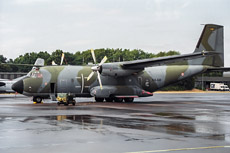
|
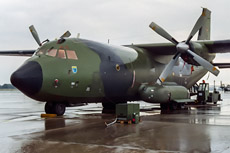
|
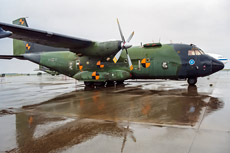
|
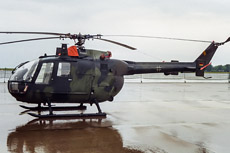
|
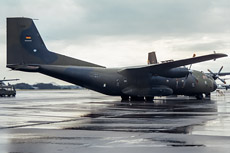
|
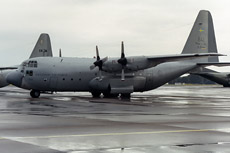
|
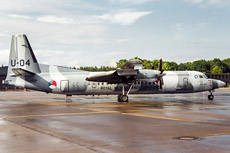
|
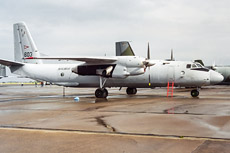
|
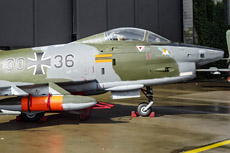
|

|
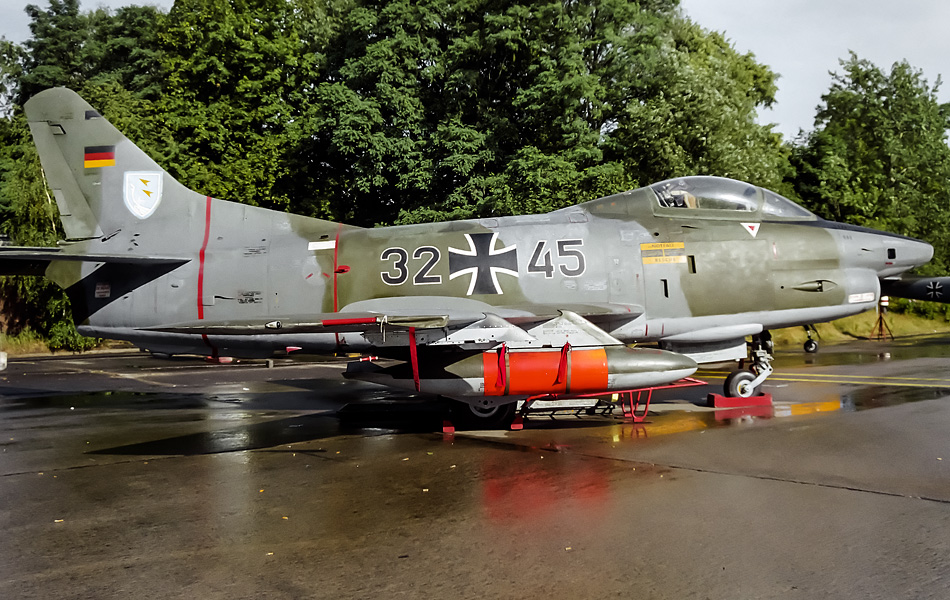
|

|
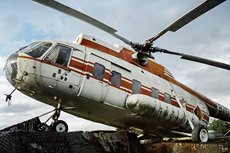
|
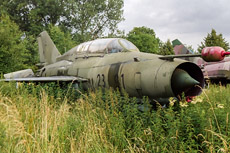
|
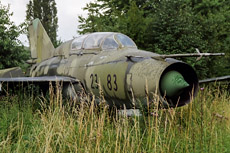
|
|
|

|







